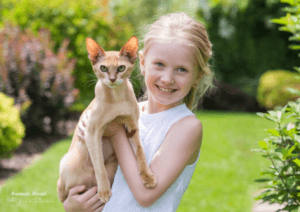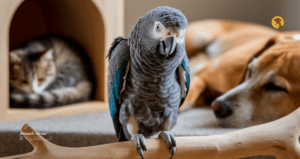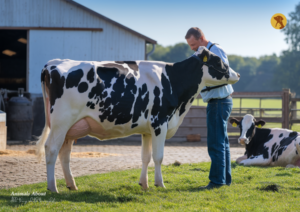Creating a wildlife-friendly garden is one of the most rewarding ways to support local biodiversity while turning your outdoor space into a peaceful haven. Whether you’re an experienced gardener or just starting out, small actions can make a big impact. From planting native species to providing safe nesting spots, this guide will help you create a garden that welcomes birds, bees, butterflies, and other beautiful creatures.
Why a Wildlife-Friendly Garden Matters
With urban development and climate change affecting natural habitats, local wildlife needs our help more than ever. Lawns and manicured gardens may look neat, but they often lack the food, shelter, and diversity that animals need. Therefore, a nature-friendly outdoor space can act as a refuge, connecting fragmented habitats and supporting everything from pollinators to small mammals.
By making thoughtful choices in your garden, you become a steward of your environment. You’re not only helping wildlife but also enhancing your own connection with nature. In fact, a wildlife-friendly garden brings joy, inspiration, and life to your backyard.
Step-by-Step Guide to a Wildlife-Friendly Garden
1. Use Native Plants for Wildlife-Friendly Garden
Native plants are those that naturally occur in your region. They have evolved alongside local wildlife and provide the best sources of food and shelter. Additionally, these plants are usually drought-tolerant, require less maintenance, and resist local pests more effectively.
Some examples of native plants for wildlife include:
- Milkweed for monarch butterflies
- Coneflowers and bee balm for bees
- Oak trees and elderberries for birds
To create a natural environment, plant in clusters and layers—ground cover, shrubs, and trees—to mimic natural habitats and encourage a variety of visitors.
2. Build a Pollinator Paradise
Bees, butterflies, and other insects play a crucial role in pollination, but their numbers are declining. Consequently, a pollinator garden full of nectar-rich flowers can give these species a much-needed boost.
Tips to attract pollinators:
- Choose a variety of shapes and colors to attract different insects
- Plant bee-friendly flowers like lavender, thyme, borage, and daisies
- Include butterfly plants such as yarrow, milkweed, and fennel
- Avoid hybrid plants that may lack nectar
In addition, provide a shallow wildlife water source with pebbles for insects to land on while drinking.
3. Make Shelter a Priority
Shelter is just as important as food. Wildlife needs safe spaces to hide from predators, sleep, nest, and raise their young. For this reason, incorporating shelter features in your garden is essential.
Include features like:
- Hedgehog shelters or piles of leaves and branches
- Log piles for insects and fungi
- Rock piles and stone walls for reptiles
- Birdhouses and garden nesting spots for birds
- Dense shrubs or wild areas for small mammals and amphibians
Even a simple brush pile can offer critical cover for a variety of creatures.
4. Incorporate a Wildlife Water Source
Fresh water is essential for all animals. Thus, adding a water feature helps create a backyard nature sanctuary for birds, insects, frogs, and more.
Some water feature ideas:
- A garden pond with plants and rocks for frogs and dragonflies
- A birdbath kept clean and filled
- A dripping hose or DIY watering station
Make sure water sources are shallow and safe, especially for smaller creatures.
5. Embrace Organic Gardening Methods
Avoid synthetic pesticides, herbicides, and fertilizers. These can be toxic to the very wildlife you’re trying to attract. Instead, choose eco-friendly gardening techniques that support a thriving backyard ecosystem.
Try:
- Compost piles for rich, chemical-free soil
- Companion planting to repel pests naturally
- Hand-picking pests instead of spraying
- Mulching to conserve water and reduce weeds
By going organic, you support soil life, beneficial insects, and overall plant health.
6. Practice Sustainable Garden Design
Sustainability goes hand-in-hand with wildlife care. A sustainable garden design minimizes waste, conserves water, and reduces your environmental impact.
Implement sustainable practices such as:
- Rainwater harvesting systems
- Drip irrigation to minimize runoff
- Planting drought-resistant species
- Using recycled materials for paths and borders
- Composting garden waste and kitchen scraps
These choices not only benefit wildlife but also help preserve our planet’s natural resources.
7. Create a Wildlife Corridor
A wildlife corridor allows animals to move safely between habitats. If your garden borders other green spaces, keep fences low or add holes to allow small animals to pass through.
You can also connect gardens by collaborating with neighbors to plant similar species or create shared habitat features. The more connected our green spaces are, the better for wildlife survival.
Enhancing Your Wildlife-Friendly Garden with Features
Add Bird Feeders and Nesting Boxes
Feeding birds can be a delightful part of your day. To attract a variety of species, install different types of feeders and provide safe spaces for nesting.
- Use seed feeders, suet blocks, and fruit trays
- Keep feeders clean to avoid spreading diseases
- Mount nesting boxes appropriate to local bird species
Build a Mini Insect Hotel
An insect hotel offers shelter to beneficial bugs like ladybugs, lacewings, and solitary bees. Simply fill a wooden box with materials like:
- Bamboo canes
- Straw and pinecones
- Bark and leaves
Then, place it in a sunny, sheltered location near flowering plants.
Don’t Over-Tidy Your Garden
Neatness isn’t always nature-friendly. In fact, letting areas grow wild, leaving leaf litter, and allowing dead wood to remain creates microhabitats that support biodiversity.
Nature thrives in diversity and imperfection. What might look untidy to us is often essential for small creatures.
Year-Round Care for a Thriving Garden Habitat
Wildlife needs support all year long—not just during spring and summer. Therefore, keep your garden thriving with seasonal care:
- Spring: Plant flowers and set up nesting boxes
- Summer: Water regularly and provide shade
- Autumn: Leave seed heads for food and gather leaves for shelter
- Winter: Offer high-fat food and fresh water, avoid pruning too much
Every season presents opportunities to help your backyard ecosystem flourish.
The Benefits of a Wildlife-Friendly Garden
Beyond helping animals, a wildlife-friendly garden brings personal joy and satisfaction. Moreover, it offers:
- Opportunities to observe and photograph nature
- A calming, peaceful retreat
- Educational experiences for children
- Improved pollination for your fruits and vegetables
It’s also a powerful way to take part in wildlife conservation at home.
Final Thoughts: Start Small, Think Big
You don’t need to overhaul your entire yard to make a difference. Start with one flowerbed, a bird feeder, or a small pond. Every action counts, and as your garden grows, so does its impact.
A wildlife-friendly garden is a living, breathing space that reflects your love for animals and the environment. With a little care and creativity, your outdoor space can become a true sanctuary—one that both you and wildlife will cherish.
Short Disclaimer: This article is for educational purposes only. Please follow local environmental and planting guidelines when developing your wildlife-friendly garden.
Explore more animal-friendly articles at animalsabout.org and join us in making the world a better place for all creatures, big and small.
A wildlife-friendly garden is a green space designed to support local animals like birds, bees, butterflies, and small mammals. It includes native plants, natural shelter, and chemical-free gardening practices to promote a healthy ecosystem.
Even in small spaces, you can start by planting native plants for wildlife, installing a bird feeder, creating a mini pond or water dish, and avoiding harmful pesticides. Small changes make a big difference over time.
Native plants have evolved alongside local wildlife, providing the best sources of food and shelter. They also require less maintenance and water, making them ideal for eco-friendly gardening.







